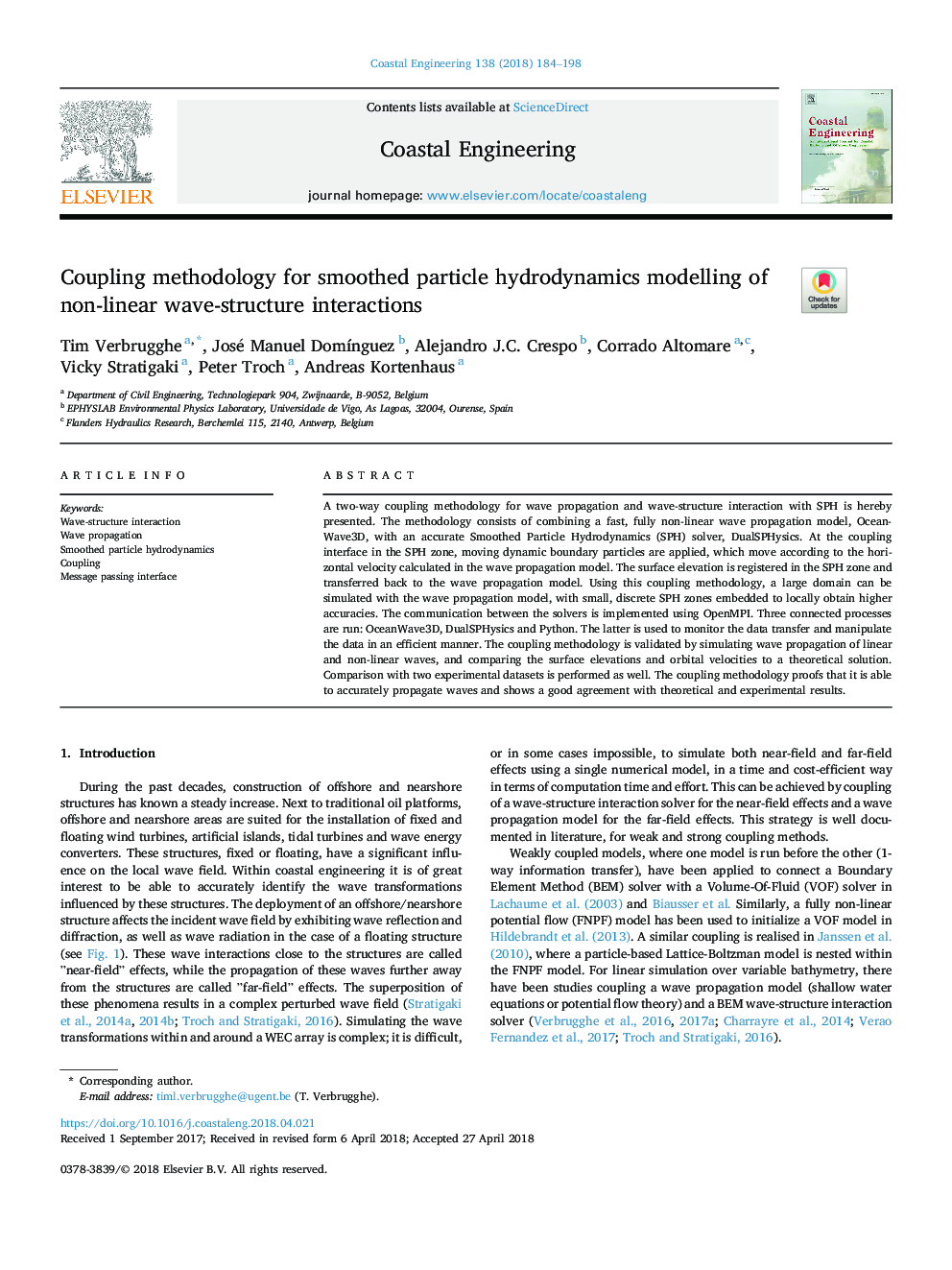| Article ID | Journal | Published Year | Pages | File Type |
|---|---|---|---|---|
| 8059489 | Coastal Engineering | 2018 | 15 Pages |
Abstract
A two-way coupling methodology for wave propagation and wave-structure interaction with SPH is hereby presented. The methodology consists of combining a fast, fully non-linear wave propagation model, OceanWave3D, with an accurate Smoothed Particle Hydrodynamics (SPH) solver, DualSPHysics. At the coupling interface in the SPH zone, moving dynamic boundary particles are applied, which move according to the horizontal velocity calculated in the wave propagation model. The surface elevation is registered in the SPH zone and transferred back to the wave propagation model. Using this coupling methodology, a large domain can be simulated with the wave propagation model, with small, discrete SPH zones embedded to locally obtain higher accuracies. The communication between the solvers is implemented using OpenMPI. Three connected processes are run: OceanWave3D, DualSPHysics and Python. The latter is used to monitor the data transfer and manipulate the data in an efficient manner. The coupling methodology is validated by simulating wave propagation of linear and non-linear waves, and comparing the surface elevations and orbital velocities to a theoretical solution. Comparison with two experimental datasets is performed as well. The coupling methodology proofs that it is able to accurately propagate waves and shows a good agreement with theoretical and experimental results.
Keywords
Related Topics
Physical Sciences and Engineering
Engineering
Ocean Engineering
Authors
Tim Verbrugghe, José Manuel DomÃnguez, Alejandro J.C. Crespo, Corrado Altomare, Vicky Stratigaki, Peter Troch, Andreas Kortenhaus,
